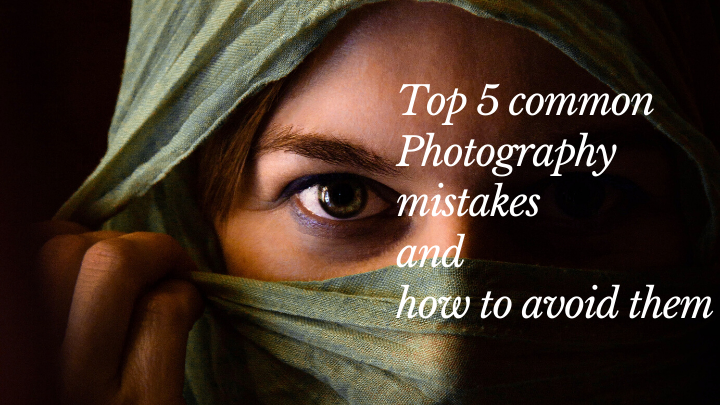
This article focuses on the industry standard tips and tricks of top 5 common Photography mistakes and how to avoid them.
Everyone can take photos, but not everyone can take good pictures. We all have been there, including professional photographers, when they were starting. Taking good photos is crucial, especially if it’s a significant part of your business. For example, bulk jewelry-retouching services do require not only topnotch editing but also professional photography skills.
Common photography mistakes
Everyone makes mistakes, especially when it comes to taking photos. A lot of people take pictures just for doing it. Worse, the subjects on the photo look unflattering and uncompelling. It is specially true, when you try to capture photos of kids and pets. If you have extra time, you might want to check some pictures online and see how they make their photos look more compelling and eye-catching.
For one thing, taking photos should not only for the sake of taking one. Instead, it should tell a story to the one who sees it without the need for fancy words.
1. Focusing on the wrong part of the picture
Most cameras nowadays have an autofocus feature. Basically, your endzone camera will automatically choose a spot to focus on through this feature. The downside of it is that it might not focus on the wrong frame spot and even blur off the actual money-shot subject.
However, it’s easy to make the mistake of focusing on the wrong part of the picture, which can ruin your photo. For example, if you’re taking a portrait of someone and their nose is in focus but their eyes are not, then you’ve focused on the wrong part of the picture. If you’re not happy with the autofocus results, you can try using manual focus. This gives you more control over where the focus is placed in the image. To use manual focus, turn the focus ring on your lens until the subject is in focus.
Examples:
- When taking portraits, focus on the eyes. The eyes are the most important feature on the face, and focusing on them will help to draw the viewer’s attention to the subject.
- When taking landscape photos, focus on the foreground or the middle ground. This will create a sense of depth in the image.
- When taking wildlife photos, focus on the animal’s eye. This will help to create a connection with the viewer and make the photo more engaging.
2. Always putting the subject at the center of the photo
Centering your subject in a photo is one of the biggest and common photography mistakes that many beginner photographers make. It’s easy to see why: it seems like the most natural and balanced way to compose a shot. However, centering your subject can actually make your photos look static and boring. As mentioned, a picture should tell a story. It should not only be about the person but also the background and other elements around it.
Instead of centering your subject, try using the rule of thirds. The rule of thirds is a simple composition technique that can help you create more interesting and dynamic photos. To use the rule of thirds, imagine dividing your frame into nine equal squares, two horizontally and two vertically. Then, place your subject at one of the intersection points.

Of course, there are times when centering your subject can be effective. For example, if you’re taking a photo of a symmetrical object, centering the object can be a good way to create a balanced and harmonious composition. However, in general, it’s best to avoid always putting your subject at the center of the photo.
3. Cutting parts of your subject
Isn’t it annoying when you find your photo, and then you see that your feet or half of your body have been cut off for some reason? The same goes when you take pictures of structures and sceneries. Taking photos that chop away parts of it (such as a limb or the top of a building) is a big no-no in photography. Cutting off parts of your subject can make your photos look unprofessional and unfinished. It can also make it difficult for the viewer to understand what’s happening in the photo.
This can happen when you’re not paying attention to the edges of the frame, or when you’re using a lens that’s too narrow. It can also happen when you’re shooting in low light and can’t see the edges of the frame clearly. As much as possible, get your subject all in the frame for better appreciation by those who see it.
Leave some breathing room while shooting. Don’t crop your photos too tightly. Leave some space around the edges of the frame to give the viewer something to look at. If you’re shooting a close-up of someone’s face, make sure that their entire face is in the frame, including their eyes, nose, mouth, and ears. If you’re shooting a landscape, make sure that the horizon is in the frame and that the sky and the ground are balanced.
4. Not paying attention to the background
The background of a photograph is often overlooked, but it can play a major role in the overall composition and impact of the image. A distracting or cluttered background can ruin an otherwise great photo, while a well-chosen background can enhance the subject and make the photo more visually appealing.
Some backgrounds can make the subject look awkward. In such cases, you might want to re-position your camera. This can prevent stiff shots like a tree sprouting out from the subject’s head and other similar scenarios. A plain wall or backdrop can be a great way to isolate your subject and create a simple, clean composition. You should also use bokeh. The bokeh effect of blurring the background of a photo. This can be a great way to create a sense of depth and focus attention on your subject.

One more tip to avoid such photography mistakes. Use your viewfinder. Take a moment to look through your viewfinder before you take a photo. This will give you a better sense of what will be included in the frame, including the background. A tripod can also help you keep your camera steady, which is especially important when shooting in low light or with a slow shutter speed. This will give you more time to compose your shot and pay attention to the background.
5. Taking a photo directly in front of the subject
It does focus on the subject, but it might not be as compelling as the ones you see on your Instagram feed. Try experimenting with different angles and perspectives. You can also try tilting your camera a little bit or add a black-and-white filter on your shot for a more dramatic effect.
Taking photos directly in front of your subject can make your photos look one-dimensional and uninspired. It’s more interesting to experiment with different angles and perspectives to create more dynamic and engaging images. One of the easiest ways to avoid taking photos directly in front of your subject is to get down on their level. This will help to minimize distortion and make your subject look more natural.
You should also do experiments. Don’t be afraid to move around and experiment with different angles and perspectives. Try shooting from above, below, or to the side of your subject. You can also try shooting from behind them, or even from their point of view. Soft light is more flattering than harsh light, so try to shoot in the shade or on a cloudy day. If you’re shooting indoors, you can use a diffuser to soften the light from your flash.
Taking photos is one way to preserve good memories. However, it should also be worth the second look. As mentioned, try experimenting with different shots and angles to see what works well in your picture-taking style. A good photo should tell a story without telling or writing what it is all about.
